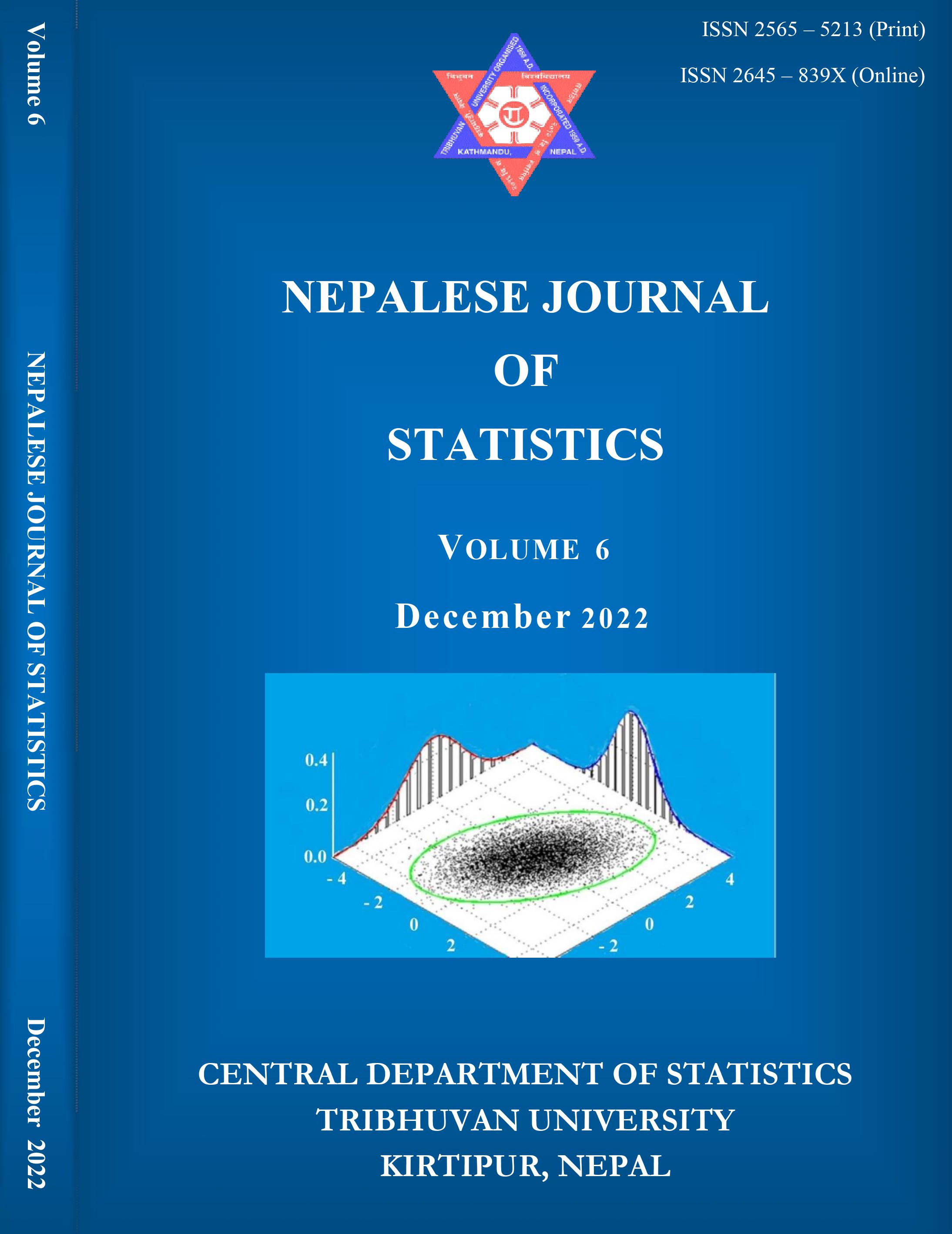On the Use of Logistic Regression Model and its Comparison with Log-binomial Regression Model in the Analysis of Poverty Data of Nepal
DOI:
https://doi.org/10.3126/njs.v6i01.50806Keywords:
Diagnostics, elevation in risk, goodness of fit, log-binomial, logistic, poverty, stability, variable selectionAbstract
Background: Previous literatures have indicated that log-binomial regression model is an alternative for the logistic regression model for frequent occurrence of event of outcome. The comparison of the performance of these two models has been found with reference to clinical/epidemiological data. Nonetheless, the application of log-binomial model and its comparison with the logistic model for poverty data has not been described.
Objective: To compare logistic and log-binomial regression model in terms of variable selection, effect size, precision of effect size, goodness of fit, diagnostics, stability of the model, and the issue of failure convergence.
Materials and Methods: Cross sectional data of 5988 households of Nepal Living Standard Survey 2010/11 has been used for the analysis. The performance of logistic and log-binomial model has been compared in terms of variable selection, effect size, and its precision for each covariate, goodness of fit using Hosmer - Lemeshow (H-L) test, diagnostics of the model, stability of the model using bootstrapping method, and the issue of failure convergence.
Results: Logistic model overestimates the effect size, yields wider 95% confidence interval than that of log - binomial model for each covariate. The greater elevation in risk for covariates varies from 13% to 173%. Logistic model satisfies goodness of fit of the model (p = 0.534), diagnostics tests, and stability of the model. However, log-binomial model grossly violates the goodness of fit of the model (p = 0.0004) but satisfies the model diagnostics and stability criteria.
Conclusion: Log-binomial model satisfies all criteria for model development and diagnostics except gross violation in goodness of fit of the model. However, logistic regression model satisfies all the criteria including goodness of fit of the model. On the basis of the entire comparison of model performance, logistic regression model is better fitted than the log-binomial model in fitting the poverty data set of Nepal.
Downloads
Downloads
Published
How to Cite
Issue
Section
License
© Central Department of Statistics, Tribhuvan University, Kirtipur, Kathmandu, Nepal
The author of article must sign the copyright permission or the author must assign copyright to the Central Department of Statistics, Tribhuvan University prior to publication.
All rights reserved.




